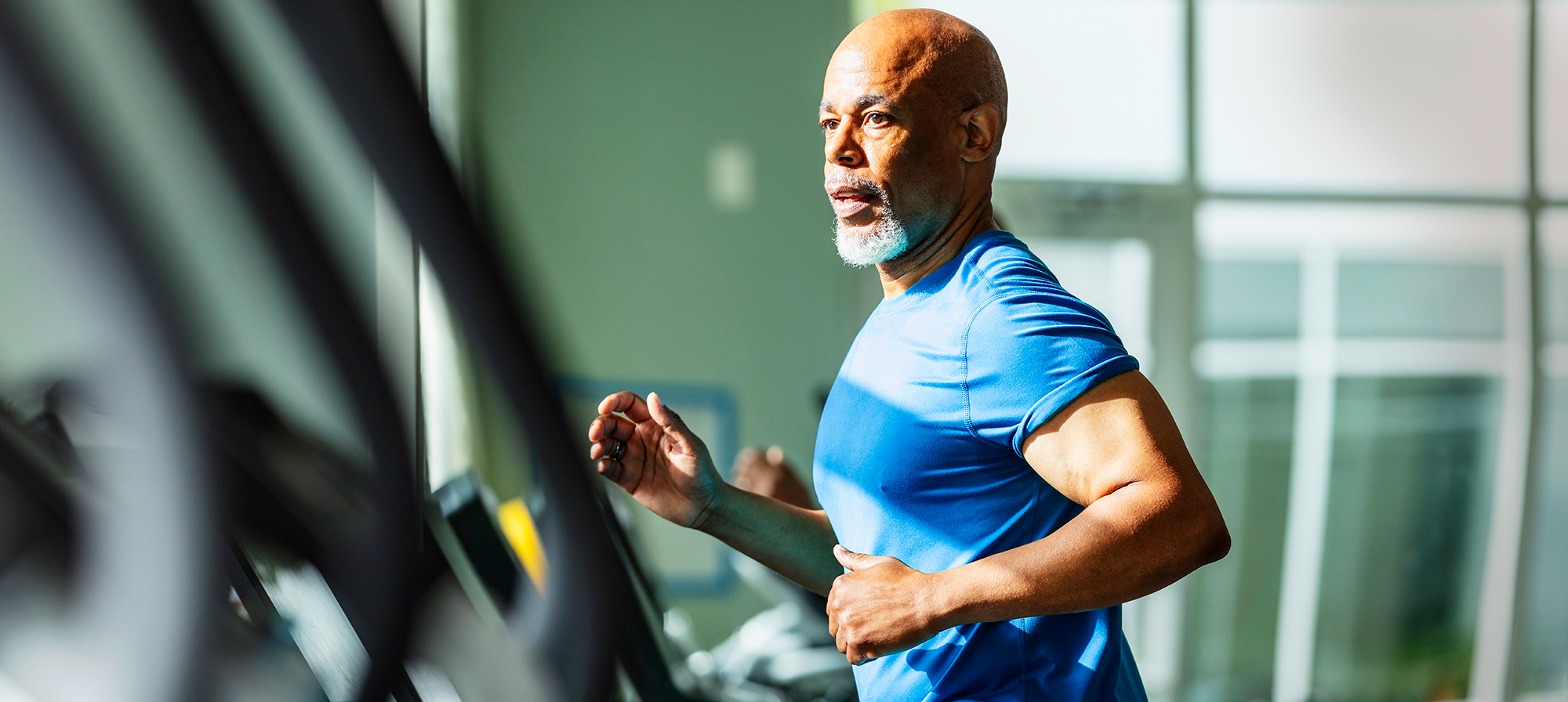Getting active after joint replacement surgery is key to your recovery. Learn why it’s so vital—and how to stay safe once you return to your fitness routine. Also learn about how crucial it is to follow through with your rehab and to be patient as your joint heals.
Once joint surgery is in your rearview mirror, you can get on with the real work—rehabbing and getting back to the active life you've been missing. But you may have questions or concerns about how to get active again and when you’ll be able to do so. You may worry that exercise may damage your joint replacement.
These are valid concerns. But in almost all cases, getting back to an exercise routine is safe and the best thing you can do for your new joint. Advances in techniques and medical technology over the years have made these procedures safer and more effective than ever. And the materials used in joint replacement are very durable. They can last for many years.
That said, joint replacement is still a major surgery. It can be a slow road to a full recovery for a new hip, knee, or shoulder. It will vary, depending on the joint, with new knees and shoulders taking longer than new hips. You’ll have to ease back in as you slowly rebuild your fitness. And this road to recovery might not be a straight line. You might face some setbacks along the way. But the more effort you can put toward rehab, the more likely you are to see a successful outcome.

How soon will you be on your feet again?
Understand that no 2 recovery times will look the same. But you might be surprised by how quickly you’ll be back on your feet after surgery. In fact, most surgeons want their patients to get mobile right away. As in … right after surgery! (Using a walker or crutches, of course.) Too much sitting or lying down right after surgery may lead to blood clots or other issues. So even though you may not feel like it, you’ll be on your feet almost immediately.
However, there’s a big difference between getting back on your feet and getting back to a full workout routine. This is where your physical therapist comes in.

Working with your physical therapist (PT)
You’ll work closely with your PT right after your surgery. They’ll teach you how to ice your joint, get in and out of a chair or a bed, and how to protect it. And you’ll continue to work with your PT as you recover from surgery.
There will be phases to your recovery. And your PT will gauge your progress during each phase. After you achieve the goals of one phase, you’ll move onto the next. In this way, you’ll gradually work your way up to more difficult exercises and activities.
Your PT will also design an exercise program just for you. It will include exercises to help strengthen the muscles that support your joint, as well as ones to help improve mobility. Building strength and range of motion around your new joint is the key to a successful recovery.
- Range of motion exercises. Surgery causes swelling and pain around the new joint. Your PT will teach you exercises that will help improve your ability to move your joint. The goal is to get you back to full range of motion.
- Strength exercises. You’ll experience weakness in the muscles that surround your new joint. Your PT will choose strength training exercises to build these muscles back up.
- Balance training. If you’ve had joint pain for some time, you’ve likely been favoring one side of your body for a while. Your PT will include stability exercises to help you improve your balance.

Taking your rehab home
The first few PT sessions will likely take place at a clinic near you, or they could occur at your home. Your PT will be able to closely monitor your progress and teach you the exercises you’ll need to know and do as a home exercise program on your own, as well.
You’ll meet with your PT regularly so they can check on your progress. But it’s up to you to keep up with your exercise routine at home. Be sure to closely follow the plan they put in place for you.
Don’t try to overdo it, either. You may be itching to get back to your old fitness routine and activities. You might even feel like you’re able to work out harder or push it a little more because you don’t have the pain you had before. But don’t take the risk. Wait until your PT gives you the green light.

Listen to your body
Pay attention to how you feel when you exercise. You can expect to feel some soreness—that’s normal. Talk with your doctor or PT to see what they recommend if your pain is not manageable. You will have to modify your movements, scale back the intensity, or switch to a different type of exercise. Your PT will guide you.
Sometimes soreness or joint pain is a sign of something more serious. Call your doctor or PT if you notice any of these red flags:
- You have warmth, redness, and tenderness around the incision
- You develop pain that does not improve over 2 days
- You have increased swelling that does not go down over 2 days
- You have immediate, severe pain while doing exercise or activity

Getting back to where you want to be
Try to stay positive and be patient with the process. Depending on the exact procedure you’ve had, it may be as few as 3 months to as many as 9 months before you’re truly able to get back to a rigorous fitness routine. Your doctor and PT will be able to give you a more definite timeline.
But remember: Time will pass, and when your joint replacement is fully healed, you’ll be able to experience pain-free activity again.
In the meantime, keep track of your progress so you can see how far you’ve come. And be proud of yourself as you work to regain your fitness after your joint replacement.

Not a Silver&Fit® member? Learn more about everything the program has to offer, including more helpful healthy living tips like this, here on our website.
This information is not intended to take the place of regular medical care or advice. Please check with your doctor before using this information or beginning any self-care program. Images used for this article do not depict any members of the Silver&Fit program.
References
American Association of Hip and Knee Surgeons. (2018). What are hip and knee replacement implants made of? https://hipkneeinfo.org/wp-content/uploads/2024/03/What-Are-Hip-and-Knee-Replacements-Made-Of.pdf
Brandes, M., Ringling, M., Winter, C., Hillmann, A., & Rosenbaum, D. (2011, March). Changes in physical activity and health-related quality of life during the first year after total knee arthroplasty. Arthritis Care & Research, 63(3), 328-334. https://doi.org/10.1002/acr.20384
Cleveland Clinic. (2023, May 10). Total Hip Replacement.
https://my.clevelandclinic.org/health/treatments/17102-hip-replacement
Cleveland Clinic. (2021, May 28). How to get back to exercising after joint replacement surgery. https://health.clevelandclinic.org/how-to-get-back-to-exercising-after-joint-replacement-surgery/
Foran, J. R. H. (2022, May). Activities after knee replacement. American Academy of Orthopaedic Surgeons. https://orthoinfo.aaos.org/en/recovery/activities-after-knee-replacement/
Foran, J. R. H. (2022, February). Total knee replacement exercise guide. American Academy of Orthopaedic Surgeons. https://orthoinfo.aaos.org/en/recovery/total-knee-replacement-exercise-guide/
Larson, J. (2018, December 12). The bionic athlete: Returning to the gym after a joint replacement. Larson Sports and Orthopaedics. https://larsonsportsortho.com/exercise-after-hip-or-knee-replacement/
This article was written by Jason Nielsen, edited by Nora Byrne, and clinically reviewed by Jossue Ortiz, DC. Last clinically reviewed by Jaynie Bjornaraa, PhD, MPH, PT, SCS, ATC, CSCS, CSPS, on December 30, 2024.





